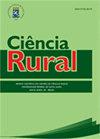巴西圣保罗中西部有机栽培和常规栽培下葎草品种的农艺性能
IF 0.9
4区 农林科学
Q3 AGRONOMY
引用次数: 0
摘要
摘要:啤酒花是一种多功能植物;然而,它的大部分产品都是面向啤酒市场的。在巴西,所有的啤酒花需求都是进口的,这引起了人们对国内生产的兴趣。遗传物质和栽培系统可以影响啤酒花的生产。因此,本研究评估了在巴西本文章由计算机程序翻译,如有差异,请以英文原文为准。
Agronomic performance of Humuluslupulus L. varieties cultivated in organic and conventional systems in São Paulo center-west, Brazil
ABSTRACT: Hop is a multifunctional specie; however, a large part of its production is destined for the beer market. In Brazil, all hop demand is imported, which has aroused interest in national production. Genetic material and cultivation systems can influence hops production. Thus, this study evaluated morphological and productive performance of hop varieties grown under organic and conventional management in the central-west region of São Paulo, Brazil. The hop yard was installed in the experimental area of the FCA/UNESP (São Paulo State University, School of Agriculture) - Botucatu, in November 2018, the data were collected in second year of production. A randomized block design was adopted, in 2 x 5 Split-Plot, being the main factor: cultivation systems (organic and conventional), and secondary factor: hop varieties (Columbus, Chinook, Nugget, Cascade, and HallertauMittelfrüeh), with four blocks and four plants per plot. Crop-specific morphological and productive parameters were evaluated. The results showed no significant influence of cultivation systems in morphological parameters. Regarding the varieties, Chinook, Cascade, and Nugget stand out for cone length. Columbus, Chinook and Cascade showed higher yields when grown in organic system, obtaining 1100.66, 1088.27 and 940.40 g of cones per plant, respectively. While, HallertauMittelfrüeh variety was the least productive in both systems, in organic system with 160.50 g per plant production, and 267.84 g per plant in conventional system, and, also showing lower cycle compared to the others.
求助全文
通过发布文献求助,成功后即可免费获取论文全文。
去求助
来源期刊

Ciencia Rural
AGRONOMY-
CiteScore
1.70
自引率
0.00%
发文量
233
审稿时长
2-4 weeks
期刊介绍:
The purpose of Ciência Rural is to publish the results of original research, note and reviews which contribute significantly to knowledge in Agricultural Sciences. Preference will be given to original articles that develop news concepts or experimental approaches and are not merely repositories of scientific data. The decison of acceptance for publication lies with the Editors and is based on the recommendations of Editorial Comission, Area Committee and/ or ad hoc reviewers. The editors and reviewers are external to the institution.
 求助内容:
求助内容: 应助结果提醒方式:
应助结果提醒方式:


